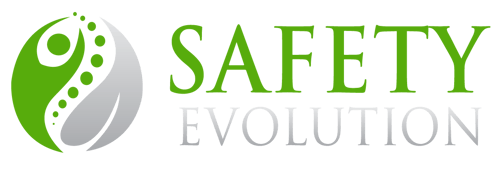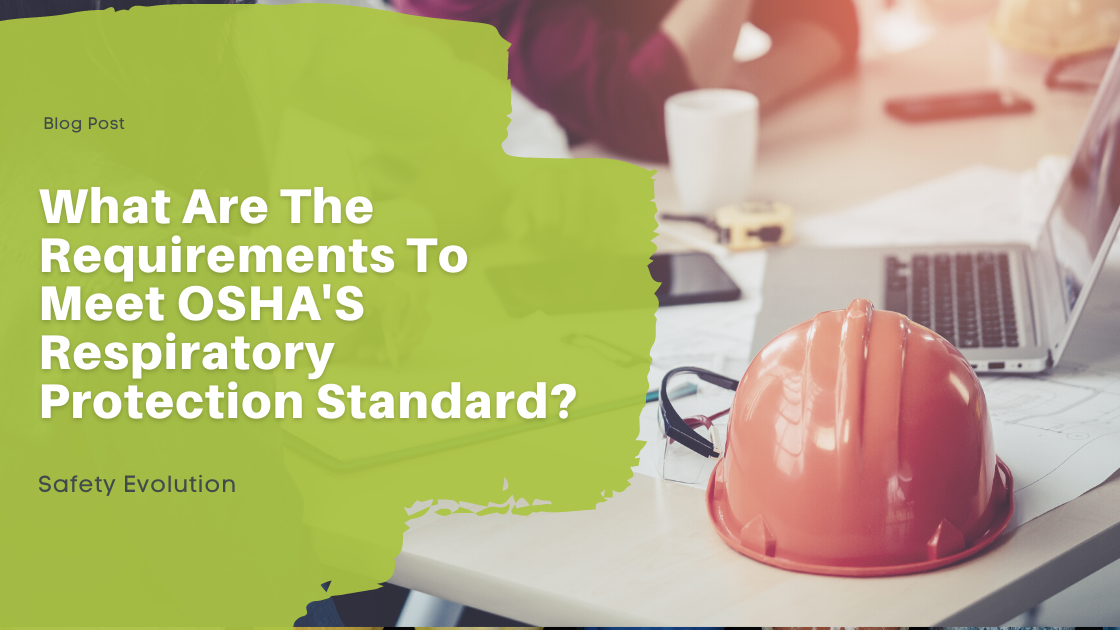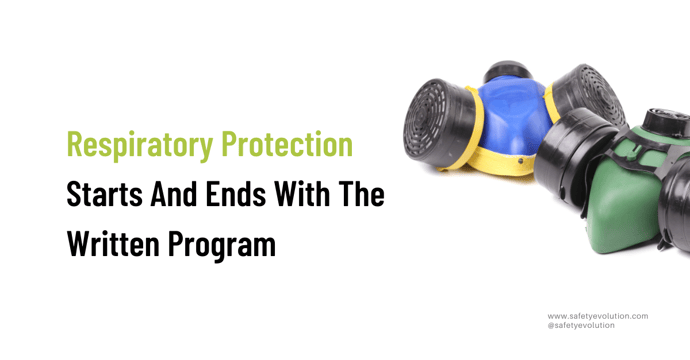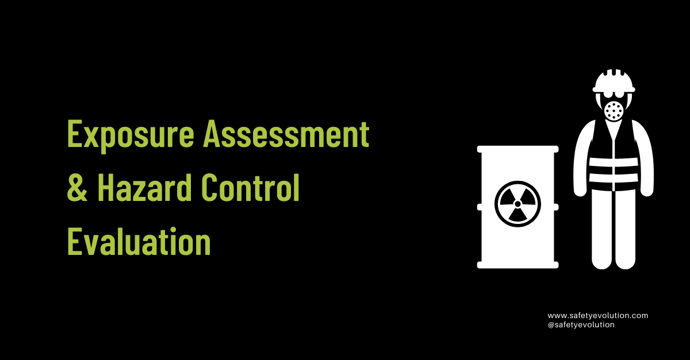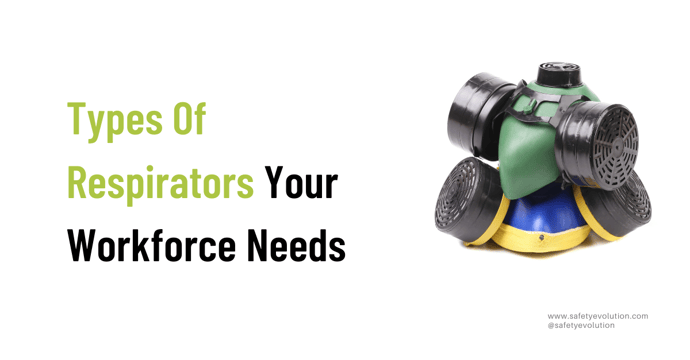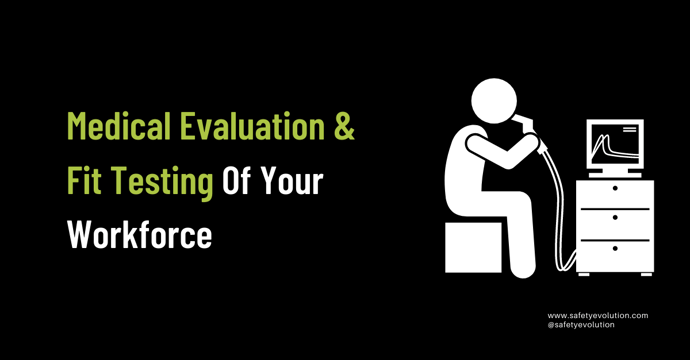Respiratory protection is specialized PPE that equips workers with the tools to protect themselves from airbourne hazards. In our earlier blog post “ Top 5 OSHA Violations in 2022, Is Your Team Aware? ” we see that the #3 OSHA Violation for 2022 was non-compliance with OSHA standards for respiratory protection.
The effects of respiratory hazards caused by particles, chemicals, or biological agents vary from immediate to gradual. Respiratory hazards such as H2S, produce damaging responses very quickly! Respiratory injuries and illnesses caused by prolonged exposure are often gradual, appearing over time. Workers may dismiss or minimize the importance of respiratory protection if illness or injury is not immediately apparent.
Building a strong Respiratory Protection Program is of utmost importance! It will ensure that your workers are kept safe from atmospheric hazards and will keep your site compliant. The program aids you in your work as an EHS professional in the following ways:
- provides a trainable and documentable process to meet the OSHA standards for your jurisdiction.
- gives your workers the necessary knowledge they need to understand the impact of atmospheric hazards on their health
- ensures your workers are clear about the importance of using respirators to mitigate their risk of illness or injury, and
- encourages consistency in the use of respiratory protection
Respiratory Protection Starts and Ends with the Written Program
So, why is a written program important, you may ask? Good question! Two of the main reasons are:
- It is required to be OSHA compliant (29 CFR 1910.134) and,
- A written program provides the structure to ensure consistent respiratory safety at your workplace
Let’s take a look at this flowchart to determine if a written Respiratory Protection Plan is required for your job site(s). You will see very quickly that, in most cases, the answer will be “YES”
If you answer “YES” after the first question of the flowchart, then let’s put together a plan for your company’s Respiratory Protection Program.
OSHA requirements for the program include:
- A program administrator be designated (29 CFR 1910.134)
- Documentation and written safe work procedures are developed for:
- Respirator selection
- Medical evaluations
- Use of respirators
- Maintenance and care
- Assuring adequate air quality
- Training and fit testing
- Program evaluation
Exposure Assessment & Hazard Control Evaluation
The first step in any Safety Management plan is hazard assessment. What are the atmospheric hazards at your job site? Are there atmospheric hazards that exist from day-to-day? Is there a risk of accidental releases that will produce an atmospheric hazard?
Sources of Atmospheric Hazards in the workplace
-
Particulate contaminants.
-
- Dust and Fibers - Are grinding, sanding or crushing tasks taking place at the job site? Are powders or granules used in some processes? Look at these tasks as a source of hazards because, when inhaled, the particulates produced by these processes can cause mild irritation injury or serious lung disease such as silicosis or asbestosis.
- Mists - Airborne droplets formed when liquid is sprayed, shaken or mixed. Irritation can occur when mists come in contact with tissue. The lining of the nose, throat and lungs can occur when hazardous mists come in contact with tissue. Even more serious, when some types of mists are inhaled and enter the bloodstream, damage to organs and the nervous system can occur.
- Fumes- When metals or plastics are heated during welding, smelting soldering or brazing, tiny solid particles condense in the air as fumes. Exposure to some fumes can result in conditions that range from short-term irritation to chronic lung disease.
- Biological Contaminants - Airbourne biological contaminants include bacteria and viruses ( such as hantavirus) as well as organic particles originating in plant or animal materials ( grain dust, mold spores or dander). When a worker is dealing with rodent or bird droppings, using the correct respiratory filter is essential.
-
Gas and Vapour contaminants
-
- Gasses exist as molecules in the air while vapours are formed when evaporation of normally solid or liquid materials occurs. Gasses and vapours are contaminants that can produce illness and injury from both short-term, immediate exposure and continuous exposure over time. Symptoms may vary depending on exposure. Safe exposure levels and length of exposure are legislated by each jurisdiction.
-
Oxygen deficiency
-
- Although this is not a “contaminant”, the level of oxygen in the air we breathe is critical. Since normal air contains 21% Oxygen, when the level drops to 19% or less, the atmosphere is deemed “Oxygen Deficient” and immediately dangerous to life and health ( IDHL). Your workers may be at risk of oxygen deficiency when other gases displace oxygen or when oxygen reacts with other materials.
-
A combination of the above
-
- As you do your hazard assessment for your Respiratory Protection Program, look for a combination of hazards and always treat any confined or restricted space as IDHL until proven otherwise with the use of a gas monitor. When exposure levels are outside of OSHA permissible exposure limits (PELs) and/or occupational exposure limits (OELs), first try to use engineered controls to reduce the hazard ( elimination, exhaust fans and ventilation) or administrative controls (relief workers, work breaks, etc.) before providing respiratory protection ( your last line of defense).
REMEMBER! Exposure levels can change rapidly with changes in the workplace. Include a procedure for reassessing atmospheric hazards in your program.
Types Of Respirators Your Workforce Needs
Now you have determined the atmospheric hazards in your workplace. Some or all cannot be controlled to an acceptable level with engineered controls! How do you nail down the level of protection your workers will need from PPE?
The National Institute for Occupational Safety and Health (NIOSH) is the U.S. agency that approves respirators. In both Canada and the United States, workers MUST be supplied with NIOSH-approved respirators.
Respirators should be selected in accordance with OSHA Standards (29 CFR 1910.134) or CSA Standard CAN/CSA-Z94.4-02
Select your respiratory protection based on the following
- Type or substances the filter or cartridge protect against
- Limitations of the respirator and of the cartridges or filters
- Parts ( filters, cartridges, airlines, etc) are NIOSH-approved
- NIOSH approval number( always starts with the letter TC)
Consider several options of respiratory PPE so that when workers are wearing other PPE, such as glasses, both can be worn effectively. Think about worker comfort as well as safety when selecting respiratory PPE.
Types of Respirators
Non-Powered Air-purifying respirators
- ( APRs) have a filter or cartridge that cleans the air as your breath by removing contaminants. They come in half-mask or full-facepiece styles. The level of contaminants in the workplace will dictate the effectiveness of this type of respirator. Also, remember, these respirators will not increase Oxygen levels or prevent the worker from inhaling certain contaminants. ( nitrogen dioxide, nitric oxide, and nitrous oxide)
Powered Air-purifying respirators (PAPR)
- Have a battery pack that powers a blower which continuously draws air into the filters. They offer more protection than the non-powered APRs and can be used with a variety of face-pieces and hoods. NEVER use these in Oxygen deficient atmospheres!
Air-supply Respirators.
- This type of respirator supplies clean air and does not filter or clean the air. The four types of air-supply respiratory are:
- Supplied-air ( airline ) respirators
- Combination supplied air and auxiliary self-contained supply
- Self-contained breathing apparatus ( SCBA)
- Escape respirators - used only for emergency escape
REMEMBER! Selecting the type of filter for Air Purifying respiratory is as important as the selection of the respirator itself! Train your workers to know how to detect when the filter is no longer working. Workers can often detect contamination by smell, taste, or if they experience breathing irritation. Assess each contaminant for acceptable concentration levels to ensure that the “odour threshold” is below the exposure limit.
Medical Evaluation & Fit Testing Of Your Workforce
OSHA requires that workers complete a medical questionnaire that addresses conditions that could prevent them from wearing a respirator. This is to be completed before workers use respiratory protection.
A health care professional must evaluate a worker’s responses and advise that the worker can wear the type of respirator being used at the worksite.
Another thing to consider as you develop your Respiratory Protection Program is how changes in a worker’s exertion level, a change in temperature or equipment may impact the worker’s ability to safely use a respirator.
When a worker has been approved to wear a respirator, a fit test must be completed to ensure proper protection. Use the Occupational Health and Safety legislation for your jurisdiction to guide you in the “How To” of conducting a Fit Test.
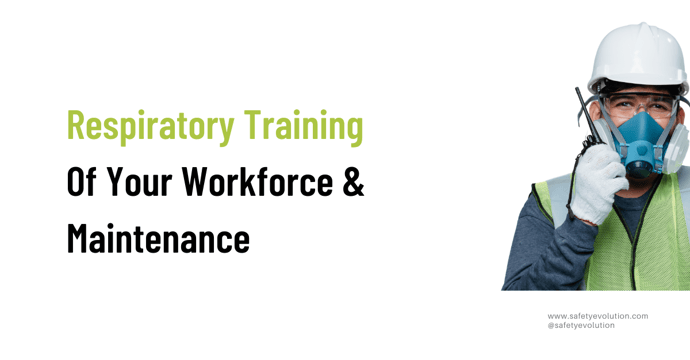
Respiratory Training Of Your Workforce & Maintenance Of Respirators
Now it's time to develop training for you workers. As you build out the employee training, start by including existing safe work procedures.
Next, build out the content to include:
- Why do employees need to use respirators
- What a respirator can and cannot do to protect them
- How to properly inspect, put on, take off, and use a respirator
- How to perform a "user seal check"
- How to use the respirator effectively in emergency situations, including what to do if it does not work properly
- How to recognize medical signs and symptoms that may limit or prevent workers from using a respirator
- How improper fit, use, or maintenance can reduce the effectiveness of the respirator
- Maintenance and storage procedures
- The requirements for federal/state OSHA respiratory protection standards
Build out the inspection form for the type of respirators being used. Or, better yet, if you already have this documentation, use your existing inspection forms. Respirators should always be inspected before use.
Include the following in your inspection form:
- Respiratory function
- Tightness and connection
- The pliability of elastomeric parts
- The condition of various parts, including the facepiece, head straps, valves, connecting tube, cartridges, canisters or filters.
Training should be conducted prior to a worker initially using respiratory protection. Ongoing refresher training should be conducted annually to keep workers connected to the use, care and inspection of respiratory equipment as well as the hazards that this equipment protects from.
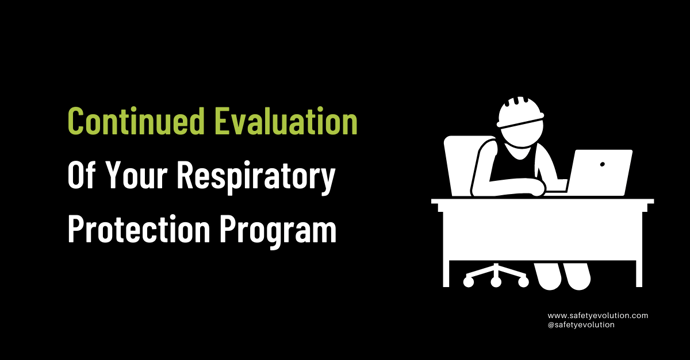
Respiratory Protection Program Continued Evaluation
Once your Respiratory Protection Program is in place there is one more very important question! How effectively is it working?
Your program administrator will review documents to be sure that tests and inspections have been completed. Worksite observations should take place regularly to ensure workers are using the equipment properly. Make note of deficiencies! Encourage input from your workers and involvement by your Joint Health and Safety Committee or Representative (check out our blog post, 4 Steps to get your JHSC Started! )
Ongoing evaluation of all the aspects of the program will ensure that workers remain safe from atmospheric hazards and your workplace will not be part of the OSHA Safety Infraction statistic for 2022! Definitely a WIN-WIN!
How Can Safety Evolution Help With Developing A Strong Respiratory Protection Program?
The Form Builder in Safety Evolution Software is a great tool for developing your respiratory equipment inspection forms. It provides you with a one-time build, continuous access and document retention. Our Risk matrix automatically ranks uncontrolled and controlled risks. A form for ongoing observations to ensure that equipment is being used correctly is hardcoded in the Safety Evolution software. We are here to streamline the duties of the program administrator and to help you successfully maintain continuing evaluation of your Respiratory Protection Program.
Book in for a Free 15-minute Safety Assessment to Discover how we can help!
Resources:
Subscribe to the below for more weekly content digging into all things Health and Safety!
